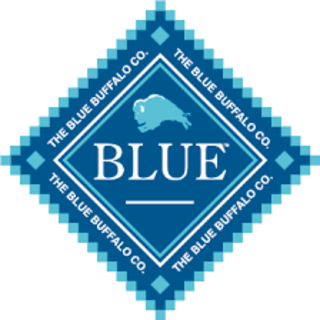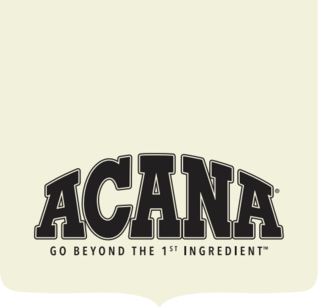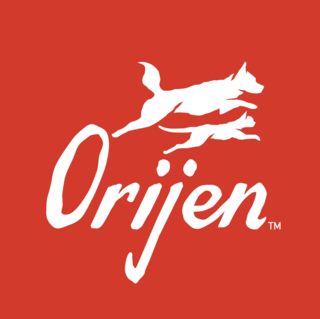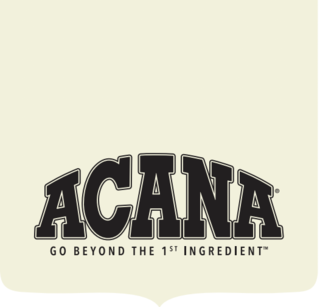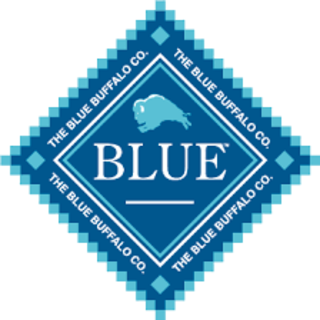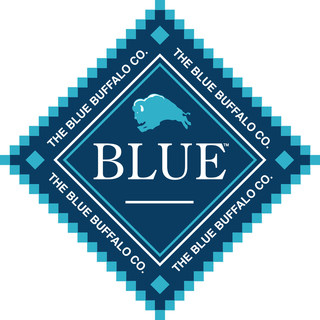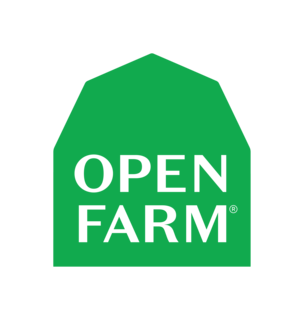8 Best Cat Foods of 2024
Beyond unlimited cuddles and love, giving your cat a nutritious diet is essential to providing it a long, happy life.
Choosing the right food can improve your cat's well-being and help prevent some common health problems. However, the best one depends on your pet's age, health and lifestyle. And there are hundreds of food options to choose from, making the task overwhelming if you don't understand cats' nutritional needs or how to read food labels.
Read on for our reviews of the best cat food in the market and our guide to how to choose cat food if you'd like to find more options on your own.
Our Top Picks for Best Cat Food
- Orijen Original Dry Cat Food - Best dry cat food
- Instinct Raw Boost Grain-Free Recipe - Best cat food for indoor cats
- Acana Grasslands Dry Cat Food - Best grain-free cat food
- Wellness CORE Dry Kitten Food - Best food for kittens
- Blue Wilderness Mature Dry Cat Food - Best cat food for seniors
- Blue Buffalo Blue Tasteful Sensitive Stomach - Best Cat Food For Sensitive Stomach
- Instinct Original Grain-Free Pate - Best wet cat food
- Open Farm Dry Cat Food - Best ethically-sourced cat food
- Smalls Fresh Ground Bird Cat Food - Best Cat Food Subscription Service
Best Cat Food Reviews
- Help support a shiny coat and healthy skin
- Prebiotics and fiber from fruits and vegetables aid digestion
- Low carbohydrate content
- Appropriate for all life stages
- Expensive (up to $70 for a 12 pound bag)
Food label
Main protein sources: Chicken, Turkey, Whole Mackerel, Turkey Giblets (Liver, Heart, Gizzard), Flounder, Chicken Liver, Whole Herring, Eggs, Dehydrated Chicken, Dehydrated Turkey, Dehydrated Mackerel, Dehydrated Chicken Liver, Dehydrated Egg
Main plant ingredients: Whole Red Lentils, Whole Pinto Beans, Whole Peas, Whole Green Lentils, Whole Chickpeas, Natural Chicken Flavor, Whole Navy Beans, Lentil Fiber, Pea Starch
Guaranteed analysis: Crude protein 40%, Crude fat 20%, Crude fiber 3%, Moisture 10%
*These details may change depending on the food’s flavor.
Why we chose this food: Dry cat food is often very high in carbohydrates, which isn't biologically appropriate for cats since they’re true carnivores. This Orijen Original formula, however, is protein-rich, featuring a mix of poultry and fish as its main ingredients.
Dry cat foods often include fillers, like corn or wheat, in large amounts. Although cats can eat fillers, they often benefit from heavily meat-based diets they can better digest. Orijen Original features chicken, turkey, mackerel, flounder and herring as its main ingredients, just to name a few.
Orijen Original Cat is grain-free and coated with freeze-dried liver to improve its taste. It’s also appropriate for all life stages, from kittens to seniors.
- Ideal for indoor cats
- Includes bites of freeze-dried raw meat
- Packed with animal-based protein
- Grain-free
- Bag is only available in one size (4.5 lbs)
Food label
Main protein sources: Chicken, Chicken Meal, Salmon Meal, Peas, Menhaden Fish Meal, Freeze Dried Chicken, Freeze Dried Chicken Liver
Main plant ingredients: Tapioca, Sun-cured Alfalfa Meal, Dried Tomato Pomace, Pumpkin seeds, Dried Chicory Root
Guaranteed analysis: Crude Protein 37.5%, Crude Fat 13%, Crude Fiber 5%, Moisture 9%
*These details may change depending on the food’s flavor.
Why we chose this food: Instinct Raw Boost Indoor Health is designed with indoor cats in mind, providing fewer calories to help less active cats maintain a healthy weight. It's available with either chicken or rabbit as the first ingredient and contains other animal protein sources, like salmon and menhaden fish meal.
This indoor cat formula includes bites of freeze-dried raw meat, like rabbit or pork liver. This boosts the food's protein content without using plant-based proteins, which cats may have a harder time digesting. The recipe has probiotics and antioxidants to aid the digestive and immune system and omega-3 fatty acids from salmon oil to promote heart health.
Instinct's Raw Boost line includes two other recipes: Raw Boost Real Chicken Healthy Weight and Raw Boost Real (available in chicken, duck and salmon flavor). The latter is appropriate for all life stages, including pregnant and nursing females.
- Most nutritional value comes from animal ingredients
- Includes a nutritious mix of muscle meat, organs, and more
- Grain-free
- Expensive (around $50 for a 10 pound bag)
Food label
Main protein source: Deboned duck, deboned chicken, eggs, chicken meal, turkey meal, catfish meal, deboned turkey, quail, duck meal, chicken liver, chicken heart, duck liver, duck cartilage, freeze-dried turkey liver
Main plant ingredients: Whole red lentils, whole pinto beans, pea starch, whole green lentils, whole chickpeas, lentil fiber
Guaranteed analysis: Crude protein 36%, Crude Fat 18%, Crude fiber 4%, Moisture 10%
*These details may change depending on the food’s flavor.
Why we chose this food: Acana Regionals Grasslands is completely grain-free and is made with animals commonly found in Kentucky grasslands.
Acana says the food consists of around 75% animal ingredients. The first items on the list include deboned duck, deboned chicken, eggs and catfish meal. The company also aims to use animals entirely when processing them for food. They incorporate meat, organs, cartilage or bone to enhance nutritional value without the need for large amounts of synthetic vitamins, minerals or other supplements.
Also, the company states it uses raw or fresh ingredients in its formulas, and it uses refrigeration or freezing as the only preservation method to maintain the ingredients’ nutritional value.
Acana's cat food selection includes two other recipes inspired by U.S. regions: Acana Meadowland and Acana Wild Atlantic. The company also has other food formulas that are protein-packed, including Indoor Entrée Adult Dry Cat Food, Bountiful Catch High-Protein Adult Dry Cat Food, Senior Entrée Free-Run Chicken & Turkey Dry Cat Food and First Feast High-Protein Kitten Dry Cat Food.
- Grain-free
- Designed to deliver the nutrients needed for healthy development
- Includes salmon oil, an excellent source of omega-3
- Only one flavor available (turkey, whitefish and chicken recipe)
Food label
Main protein source: Deboned Turkey, Turkey Meal, Deboned Chicken, Chicken Meal, Herring Meal
Main plant ingredients: Peas, Dried Ground Potatoes, Tomato Pomace, Ground Flaxseed, Cranberries, Chicory Root Extract
Guaranteed analysis: Crude Protein 45%, Crude Fat 18%, Crude Fiber 3%, Moisture 10%
*These details may change based on the food’s flavor.
Why we chose this food: Wellness CORE Kitten is made of around 55% protein ingredients like chicken, turkey and herring to support the active lifestyle and development of kittens.
The recipe also includes salmon oil, an excellent source of omega-3 fatty acids that aid in brain development. Omega-3 fatty acids also help maintain healthy skin and a shiny coat.
Other beneficial ingredients found in Wellness CORE Kitten include dried kelp and cranberries to boost fiber content and antioxidants, which support digestive and immune system health.
All in all, this recipe is meant to deliver all the nutrients your kitten needs to grow up healthy. There are also several adult formulas available on the Wellness CORE line in case your kitten ends up loving it. These include the Wellness CORE Natural Grain Free Chicken & Turkey, Wellness CORE Natural Grain Free Indoor Salmon & Herring Meal and more.
- Made specifically for cats seven years and older
- Special kibbles packed with an ideal blend of vitamins, minerals and antioxidants
- Grain-free
- Only available in one flavor (chicken recipe)
Food label
Main protein source: Deboned Chicken, Chicken Meal, Menhaden Fish Meal, Dried Egg Product
Main plant ingredients: Pea Protein, Tapioca Starch, Peas, Pea Fiber, Potato Starch, Dehydrated Alfalfa Meal, Potatoes, Dried Chicory Root
Guaranteed analysis: Protein 38%, Fat 14%, Fiber 5%, Moisture 9%
*These details may change depending on the food’s flavor.
Why we chose this food: Blue Wilderness Mature is designed for older cats, using chicken as the main ingredient to help maintain ideal muscle mass and energy levels.
The food has menhaden fish meal as one of its main protein sources and fish oil to support skin and coat health, a healthy weight and more. Other beneficial ingredients include healthy carbohydrates like sweet potatoes and carrots, which are packed with fiber and can help with digestion and hairballs.
This recipe includes kibbles specifically formulated with an ideal blend of vitamins, minerals and antioxidants. Blue calls them LifeSource Bits and makes them with minimal heat exposure, which the company says can degrade the potency of its nutrients.
- Available in several flavors
- Appropriate for all life stages
- Some picky cats may not approve
Food label
Main protein source: Chicken, Chicken Broth, Chicken Liver, Egg Product, Turkey
Main plant ingredients: Peas, Carrots, Pumpkin, Tomato, Kale, Cabbage, Ground Flaxseed, Broccoli
Guaranteed analysis: Crude Protein 10%, Crude Fat 7.5%, Crude Fiber 3.0%, Moisture 78.%
*These details may change based on the food’s flavor.
Why we chose this food: This line of wet food is appropriate for all life stages and made using wholesome, protein-rich ingredients and a touch of fruits and vegetables.
Instinct Original Grain-Free Pate is available in flavors like chicken, duck, lamb, rabbit, salmon and venison. Each recipe is made up of around 95% animal ingredients. The other 5% is vegetables and fruits like artichokes, cranberries, pumpkins and supplemental vitamins and minerals.
Instinct Original is formulated to meet the nutritional levels of both kittens and adults, even if they're pregnant or nursing. It's considered appropriate for all life stages because it provides a high-protein, optimal diet for carnivores, which cats undoubtedly are.
However, if you have a kitten and would prefer to feed it a more specific recipe, Instinct offers the Original Kitten Grain-Free Pate made with chicken, salmon and beef liver as its main protein sources.
- Uses humanely raised meat
- Four flavors to choose from (turkey & chicken, salmon, whitefish and lamb)
- Not available in popular pet stores
Food label
Main protein source: Deboned chicken, Chicken meal, Pea Protein, Dried egg product, Menhaden fish meal
Main plant ingredients: Brown rice, Oatmeal, Barley, Peas, Flaxseed
Guaranteed analysis: Crude Protein 32%, Crude Fat 16%, Crude Fiber 3.5%, Moisture 9%
*These details may change based on the food’s flavor.
Why we chose this food: This recipe is formulated to aid digestive health, containing prebiotic fiber that increases healthy bacteria in the intestine.
Blue Tasteful Sensitive Stomach includes deboned chicken as its main protein source, supplying the much-needed protein your obligate carnivore requires. It's also packed with whole grains and vegetables and doesn't have artificial flavors or preservatives.
However, this dry cat food truly stands out because it has fructooligosaccharides. Fructooligosaccharides (FOS) are a type of carbohydrate that occurs naturally in fruits, vegetables and grains. They can be used as prebiotics to promote the growth and activity of beneficial bacteria in the gut, supporting overall digestive health.
- Uses humanely raised meat
- Four flavors to choose from (turkey & chicken, salmon, whitefish and lamb)
- Not available in popular pet stores
Food label
Main protein source: Humanely Raised Lamb, Ocean Whitefish Meal, Herring Meal
Main plant ingredients: Chickpeas, Red Lentils, Green Lentils, Pumpkin, Apples
Guaranteed analysis: Crude Protein 10%, Crude Fat 7.5%, Crude Fiber 3%, Moisture 78%
*These details may change based on the food’s flavor.
Why we chose this food: Open Farm is the perfect option for people who are as concerned with sustainability as they are about the nutritional value of their cat's food.
The company sources meat from farms that comply with strict animal welfare standards, like pasture diets, no hormones and space to roam freely. And it only uses wild-caught fish caught with methods that minimize bycatch (species caught unintentionally) and protect the marine environment.
Open Farm has four dry food recipes: Homestead Turkey & Chicken, Wild-Caught Salmon, Catch-of-the-Season Whitefish and Pasture-Raised Lamb. Aside from being high in protein, the recipes often contain other natural ingredients, like cranberries, pumpkins and apples, to aid digestion and supply antioxidants and vitamins.
Open Farm also offers the Kitten Grain-Free Dry Cat Food, Open Prairie Grain-Free RawMix and Wild Ocean Grain-Free RawMix. The last two are the company’s most protein-packed formulas, featuring kibble that’s covered in bone broth, added chunks of freeze-dried raw chicken and turkey and more.
- High protein formulas
- Rich in moisture
- Sampler box available
- Needs to be stored in the freezer and thawed in refrigerator
- Only available by subscription
Food label
Main protein source: Chicken, Chicken liver
Main plant ingredients: Green beans, Kale, Dandelion greens, Dried kelp
Guaranteed analysis: Crude Protein 13%, Crude Fat 8.5%, Crude Fiber 1.5%, Moisture 73%
*These details may change based on the food’s flavor.
Why we chose this food: Smalls delivers human-grade fresh cat food that's packed with carnivore-appropriate levels of protein right to your door.
The company states its recipes are human-grade, which means the ingredients used are the same quality as those you would buy at the grocery store for yourself.
When you visit Smalls' website, you'll fill out a questionnaire about your cat's food preferences and possible health issues. With this information, the company will recommend a custom sampler pack. A week after you receive the meal sampler, a customer representative will check in with you to note your cat's favorite recipes and organize your first full order.
The meals are shipped ice-cold to your doorstep every month, and you must keep them frozen until 24 hours before you are ready to serve.
Smalls has seven recipes, including Ground Bird, Smooth Cow and Smooth Fish.
Other Cat Foods We Considered
Hill's Science Diet Adult Indoor Dry Food
- Vet-recommended brand
- No artificial colors, flavors or preservatives
- Not grain-free
- Less protein than similarly-priced foods
Hill's Science Diet Adult dry food recipe provides complete nutrition for one- and six-year-old adult cats. It uses real chicken as its first ingredient and includes minerals and amino acids essential for your cat. The company also has recipes for kittens and senior cats over eleven.
Vets regularly recommend Hill's Science Diet foods. In fact, the company carries a line of prescription formulas that help aid specific ailments like kidney disease and skin allergies.
Royal Canin Indoor Adult Dry Cat Food
- Vet-recommended brand
- Helps provide hairball relief
- Calorie content ideal for indoor cats
- Not grain-free
- First ingredient is chicken meal
- Less protein than similarly priced brands
- Contains artificial ingredients
This formula is designed to help indoor cats maintain healthy weight, while supporting digestion and hairball relief. Vets often recommend Royal Canin foods; however, note that this recipe is made with chicken meal — a powder made from rendered chicken and by-products, which some consider to be of lesser quality than whole chicken meat.
Purina Pro Plan Complete Essentials Dry Cat Food
- Underwent feeding trials
- Chicken as its first ingredient
- Cheaper than other options
- Contains artificial ingredients
- Has poultry by-product
Purina is a longstanding brand, and this food, in particular, has received tons of good reviews. It features chicken as its main ingredient to boost protein content and doesn't skimp on other essential nutrients that support digestion, skin, immune health and more.
Purina Pro Plan Complete Essentials is one of the few cat foods that has undergone feeding trials to guarantee its nutritional value. Most foods are simply tested in the laboratory and compared to the minimum nutritional values established by the Association of American Feed Control Officials (AAFCO). However, it contains artificial ingredients and poultry by-products.
Cat Food Guide
Picking the right food for your cat can be challenging considering the overwhelming amount of options available. However, choosing can be much easier once you understand your cat’s nutritional needs and how to read food labels.
Read on to learn about the different types of cat food and tips on choosing the best food for your furry friend.
Types of cat food
Dry cat food
Dry food, also known as kibble, is often the most affordable feeding option, but this doesn't necessarily mean it's less nutritious. Some dry formulas are prepared with high-quality animal ingredients to boost your cat's protein intake. However, many brands still use large amounts of fillers, like corn or wheat, which don't offer significant nutritional value for carnivores.
Many cats can enjoy a long, healthy life eating dry food alone. But it’s important to provide clean water at all times since dry food usually doesn't contain more than 10% moisture.
You can also sprinkle some water on the kibble or alternate dry and wet food to make sure your cat is adequately hydrated. This encourages better bladder and kidney function since prolonged dehydration can cause kidney disease.
Wet cat food
Wet, or canned, food is most cats’ favorite for its rich flavor and smell. It's made of at least 75% moisture, making it a significantly better water source than dry food. This can improve hydration and digestion, as well as help reduce urinary-tract issues. Wet food also usually has a higher protein content than kibble, which cats need to thrive.
Canned cat food is often available in different textures, like pâté or shredded. It has a long shelf life but must be refrigerated and used within a day or less after being opened to prevent spoilage.
Grain-free cat food
These diets replace commonly used grains like wheat and rice with non-grain carbohydrate sources like potatoes and beans.
Grains are often thought of as unhealthy. The main argument against them is that they are high in carbohydrates, which cats need less of, at least when compared to proteins. However, grains can be a key source of vitamins and energy as long as they're consumed in moderate quantities.
For example, cats may benefit more from food containing animal products as its first two or three ingredients instead of corn or other grains. However, grain-free diets don't necessarily lead to a healthier life, especially if your cat is in fine shape and has been eating grains for years.
It's been suggested that grain-free diets may cause heart disease in dogs. There are similar claims about grain-free food and cats; however, there have been less than 20 such reports to date — much less than the hundreds of claims involving dogs. It’s also important to note that investigations are still ongoing to prove this link in dogs.
Raw cat food
A raw diet includes uncooked meat, fish and organs. Some cat owners have started feeding their pets this type of diet, with the belief that this is the diet that most closely resembles what cats would eat in the wild.
There are no large-scale studies showing substantial benefits to a raw diet. There is, however, some anecdotal evidence from pet owners that have seen their cats’ skin allergies or digestion improve.
A few raw-food brands are available online, usually sold as frozen or freeze-dried formulas. On the other hand, some people prepare their own recipes at home.
Preparing a raw diet yourself, however, without input from a feline nutrition expert, could lead to vitamin or mineral deficiencies. Additionally, there's always a risk of contamination with bacteria like Salmonella and E. Coli, for both you and your cat. Buying pre-made raw meals might be a better option, as these are formulated to meet all your cat's nutritional needs.
If you're considering preparing raw meals yourself, make sure to talk to your veterinarian first.
Vegetarian or vegan food
Animal nutrition experts have been clear on one point: cats should never be fed a vegetarian or vegan diet. They're obligate carnivores, which means meat should be their primary nutrient source.
Cat's can't thrive on a fully plant-based diet because their digestive systems aren't equipped to handle it. A vegan or vegetarian diet would leave them protein and taurine deprived, leading to diseases like dilated cardiomyopathy, a type of serious heart condition.
What cat food is best for my cat?
Which type or brand of cat food is ideal for your cat depends on its age, lifestyle and overall health. If you're unsure which food to choose, it's best to consult a veterinarian who can give you brand recommendations and help you organize a diet plan.
Understanding your cat’s nutritional needs
Since cats are carnivores, their diets should include high-quality protein, paired with healthy fats and only a small amount of carbohydrates. Most of the nutrients your cat needs for optimal health should come from animal sources, like chicken or fish.
Animal-based proteins are easier to digest and guarantee your cat won't lack essential nutrients like taurine, an essential amino acid not available in plants. Humans and dogs can produce taurine on their own, but cats can't, and so they must get it from meat. A lack of taurine can lead to digestive, heart, and immune system issues, for example.
Cats may digest certain plant-based ingredients, but these shouldn't make up most of their diet. For example, peas and sweet potatoes are often included in cat foods as vitamin and fiber supplements.
If you'd like to read up more on cat's nutritional needs, make sure to read this pamphlet summarizing a report by the Committee on Nutrient Requirements of Dogs and Cats. You can also take a look at this list by the American Animal Hospital Association (AAHA) of questions you can ask your vet about your pet’s dietary needs.
What to watch out for when shopping for cat food
Be sure to buy food that’s appropriate for your cat's age and weight. You should also take your cat to regular vet checkups as some illnesses may change their nutritional requirements.
Cats with kidney disease, for example, require less protein and do best with prescription diets tailored for this condition. Obesity is another health ailment that requires diet adjustments. Your vet can recommend an ideal food type and weight control regimen.
Cats younger than one year should eat kitten food since they need more protein and calories to support their fast growth spurt. Adults that are more sedentary can benefit from indoor cat food, which provides fewer calories and could prevent unnecessary weight gain.
It's also important to look at the ingredient list carefully. The first ingredients on the list should be top-quality animal products like chicken, turkey or duck. Having meats listed as the main ingredients means the formula is high on carnivore-appropriate nutrients.
Some pet owners might also prefer to steer clear of animal meat by-products and meals. These are made from animal parts that aren’t considered human-grade, that is, are unfit for human consumption.These include the liver, lung and intestines. By-products and meals aren't necessarily unhealthy, but meat, poultry and fish are often preferred for their higher quality since they're similar to what is available in grocery stores for humans.
You should also avoid common artificial ingredients like:
- Caramel color
- Iron oxide color
- Disodium phosphate
- Phosphoric acid
- Ascorbic acid
- Sodium nitrite
Don’t forget to watch out for potential recalls. Pet food recalls are listed on the FDA's website.
Understanding cat food labels
These are the main parts of a pet food label you should understand:
AAFCO Statement
The Association of American Feed Control Officials (AAFCO) is a non-profit corporation that establishes pet food labeling guidelines and minimum nutritional requirements. Cat food with an AAFCO statement is considered complete and balanced.
Cat food should include an AAFCO statement that states the recipe was:
- Formulated to meet the nutritional levels established by the AAFCO Cat Food Nutrient Profiles for kittens, adults, seniors or gestating/lactating cats. This means the company tested the food's nutrient profile and compared it to the minimum nutritional values established by AAFCO.
- Underwent animal feeding tests using AAFCO procedures to substantiate that it provides complete and balanced nutrition.
- Provides complete and balanced nutrition for a specific life stage and its nutritional adequacy is comparable to a product which has been substantiated using AAFCO feeding tests.
However, do note that AAFCO doesn't test food, so it can't fully guarantee its safety and adequacy. Manufacturers are responsible for running lab tests or feeding trials to ensure their products meet AAFCO standards.
Guaranteed analysis
The guaranteed analysis includes the minimum or maximum percent of protein, fat, fiber, moisture and ash (minerals) within a food. Some manufacturers will also list specific vitamins and amino acids.
The guaranteed analysis is a great way to compare foods, as long as they're the same type. You shouldn't rely on it to compare dry and canned food since they contain different moisture content.
For example, dry food could note 36% protein in its guaranteed analysis while wet food only 10%. You would think canned food is a poor source of protein. However, taking out its moisture will show its actual protein content is much higher.
Ingredient list
The AAFCO requires companies to list ingredients in decreasing order by weight. Animal ingredients, like chicken or tuna, are often the first because they have the highest moisture content, making them the heaviest. These are usually followed by plant ingredients like corn, peas or potatoes, which help kibbles maintain their shape and add caloric content. The rest are minor ingredients that supply minerals and vitamins.
Note that it's common for pet food companies to use animal products that humans do not typically consume. Companies rarely specify which animal parts they use, but the AAFCO does offer ingredient definitions that give some insight:
- Meat or poultry: muscle tissue, but may include fat, gristle and other tissues that generally accompany the muscle. This pet food protein source most closely resembles meats sold to humans. However, it can still include less appealing (but not necessarily less nutritious) cuts of meat, including heart muscles and chicken necks.
- Meat By-Products: parts of an animal other than its muscles. It usually includes organs, blood, and bone but never hair, horns, teeth, and hooves.
- Poultry By-Products: like meat by-products, these are parts of a poultry carcass not typically consumed by people, like the heart, head and feet.
- If one of these terms is followed by the term "meal" (meat meal, for example), the ingredient was rendered. When meats are rendered, they are cooked and dried, removing most water and fat content and leaving behind protein and minerals.
How to choose the best cat food
Here’s a few tips on how to choose the best food for your cat:
- Understand your cat’s nutritional needs: Remember, cats are carnivores. Opt for food that uses high-quality meats (not by-products) as the main ingredients.
- Focus on the first items of the ingredient list: Many foods use meat as their main ingredient. However, it's often better to pick a recipe that uses several animal products. Look for meats listed as the first two ingredients, or more.
- Buy food that’s appropriate for the cat’s age and health: Cat food is formulated to meet specific nutritional requirements based on age and overall health. For example, kittens shouldn't be fed senior or weight management food. It will deprive them of the necessary calories for optimal development.
- Look for an AAFCO statement: The AAFCO nutritional adequacy statement guarantees your feline friend will receive a balanced nutrition ideal for their life stage and lifestyle.
- Does the company employ experts?: Pick brands that employ vets and pet nutritionists to develop recipes and oversee testing. Companies usually disclose this information on their website or should have no problem sharing if you call.
- Talk to your vet: Your vet can offer advice on the best type of food and amount to maintain a healthy weight. Regular checkups are important to screen for diseases that might require a specialized diet. Anyone considering changing their cat's diet should also consult a vet or animal nutritionist first. A big change could result in a sensitive stomach, unintentional weight loss or nutritional deficiencies.
- Avoid artificial additives: Avoiding artificial colors and preservatives is always a good idea to prevent potential long-term health issues.
Best Cat Food FAQs
What is the best dry cat food?
How much food should I feed my cat?
What is the best wet cat food?
What is the best cat food?
What is the best cat food for indoor cats?
How We Chose the Best Cat Food
Nutritional adequacy
Our picks are labeled with an AAFCO statement, which means they're nutritionally adequate for the life stage they're marketed for, whether for kittens or senior cats.
Ingredients
We picked foods with meat or fish as their first ingredients. We also preferred recipes without artificial flavors and preservatives and meat by-products and meals. However, if they include these animal products, they're not listed as the main protein source.
Protein content
We compared food's guaranteed analysis and favored protein-rich recipes that prioritized animal products.
Manufacturing standards
We favored brands that have vets and nutrition experts on staff, along with strict quality control measures in both ingredient selection and in the maintenance of the facilities where they produce food.
Summary of the Best Cat Food of 2024
- Orijen Original Dry Cat Food - Best dry cat food
- Instinct Raw Boost Grain-Free Recipe - Best cat food for indoor cats
- Acana Grasslands Dry Cat Food - Best grain-free cat food
- Wellness CORE Dry Kitten Food - Best food for kittens
- Blue Wilderness Mature Dry Cat Food - Best cat food for seniors
- Blue Buffalo Blue Tasteful Sensitive Stomach - Best Cat Food For Sensitive Stomach
- Instinct Original Grain-Free Pate - Best wet cat food
- Open Farm Dry Cat Food - Best ethically-sourced cat food
- Smalls Fresh Ground Bird Cat Food - Best Cat Food Subscription Service





